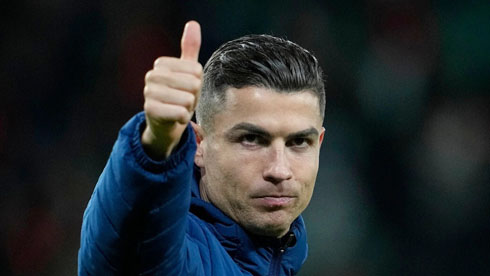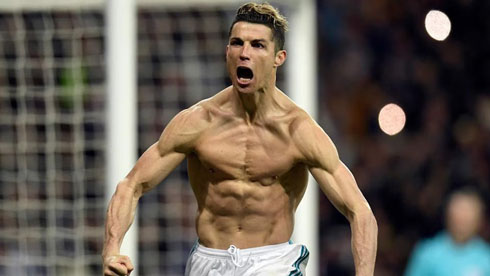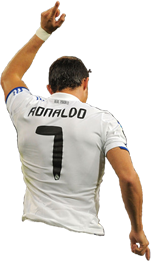

June 15, 2025

There's a lot to learn when we look at Cristiano Ronaldo, but the way he leads his teammates even when the odds are stacked against them, has to be one of his best qualities. The former Real Madrid and Manchester United legend is a true role model for younger generations...
In elite football, talent alone is never enough. From tactical systems to sports science, countless variables determine a player’s success. But among them, one intangible trait quietly shapes how greatness is perceived: body language. The way a player moves, celebrates, reacts, or even stands still can command the pitch more than statistics ever could. Cristiano Ronaldo, often celebrated for his goal-scoring records and physical transformation, is also a master of non-verbal dominance. Whether it’s the defiant posture before a free kick, the arms-flung-wide celebration, or the intense eye contact with opponents and referees — his body speaks as loudly as his boots. And he’s far from alone. Football, after all, is as much theatre as it is sport.
Cristiano Ronaldo - Another memorable season
Not all confident players influence a game. What separates Ronaldo, Zlatan Ibrahimović, or even Virgil van Dijk from other talented figures is the consistency and clarity of their non-verbal signals. These players rarely appear rushed, confused, or reactive. Instead, they give the impression of being several moves ahead — not only tactically, but psychologically.
Commanding body language affects how teammates trust you, how opponents fear you, and how referees interpret your intent. Coaches can build systems around composure and aura. It's why some players “feel bigger” on the pitch than they actually are, or why a squad can collapse when its natural leader is injured — even if that leader doesn’t wear the armband.
Not every show of power is flamboyant. Some of the game’s most iconic figures used stillness as a tool. Think of Zinedine Zidane’s calm before controlling a ball mid-air. Or Andrea Pirlo walking slowly between plays, absorbing the match’s rhythm like a jazz musician before a solo.
Cristiano, too, has evolved his game from explosive movement to moments of strategic stillness — positioning himself perfectly, waiting for the play to reach him. The visual contrast between his calm and the chaos around him creates an aura of inevitability. It’s not just physical ability; it’s an understanding of how presence can unsettle the opponent long before the ball is played.
The modern fan often watches with multiple screens, dissecting not just the game but player reactions, bench behavior, and even warm-ups. And in this media-saturated landscape, reactions are under more scrutiny than ever.
Body language during missed chances, referee decisions, or even substitutions can shape narratives. One well-timed shrug or shake of the head can ignite speculation about locker room tension. Platforms like https://footyguru365.com/ frequently highlight these subtleties, offering breakdowns of player dynamics and psychological cues that may otherwise go unnoticed by the casual viewer.
This level of analysis deepens how we understand matches — no longer as isolated moments, but as continuous emotional performances.

Interestingly, strong body language is rarely innate. Many elite players refine this skill as they mature. Early-career footage of Ronaldo at Sporting or even his first years at Manchester United shows a player eager to prove himself, often animated to the point of distraction. Over time, his gestures became more deliberate, his posture more imposing, and his reactions more calculated.
Today, even when silent, Ronaldo's presence is unmissable. He has learned not only to dominate the ball, but also the psychological space around it. For younger players watching him, there’s a lesson in how non-verbal communication can be trained, not just gifted.
Body language also influences fan culture. From youth leagues to local pitches, how players carry themselves becomes a template for admiration and imitation. The iconic stances of global stars — whether it’s Ronaldo’s leap and spin mid-air, or Messi’s low center of gravity and subtle arm shifts — are mimicked endlessly.
Even goal celebrations, often seen as personal or emotional, are deeply performative. They project status, unity, or defiance. And when fans adopt them, these gestures become part of the shared language of football, passed across generations and borders without a single word.
In the final moments of a tight match, body language becomes more than psychology — it becomes fate. The way a player walks toward the penalty spot, looks at the goalkeeper, or holds themselves during a corner can define legacies.
For legends like Cristiano Ronaldo, who often seem to thrive on the intensity of these moments, the match is played just as much in the mind as it is in movement. Their gestures aren't just habits — they're strategic signals, carefully honed over time.
Understanding this hidden grammar of the game adds a new layer to how we experience football. Because in a sport where a single look can shift momentum, silence often speaks loudest.

Cristiano Ronaldo next game for Al Nassr is on September 21, against Jeddah Club, for the King's Cup. You can watch Jeddah vs Al Nassr, Flamengo vs ES Tunis, Boca Juniors vs Benfica, Chelsea vs Los Angeles FC, Palmeiras vs FC Porto and Botafogo vs Seattle Sounders, all matches provided from our soccer streaming game pages.
Al Nassr next game:
Jeddah Club vs Al Nassr kick-off time (21-09-2025):
Beijing (China) | UTC/GMT+7: 03:00
India (New Delhi) | UTC/GMT+4.30: 00:30
Saudi Arabia (Riyadh) | UTC/GMT+2: 22:00
Spain (Madrid) | UTC/GMT+1: 21:00
Portugal and England (Lisbon/London) | UTC/GMT+0: 20:00
Rio de Janeiro (Brazil) | UTC/GMT-3: 17:00
New York (United States) | UTC/GMT-4: 16:00
Los Angeles (United States) | UTC/GMT-7: 13:00
Sources: ronaldo7.net / givemesport.com / sportingnews.com






